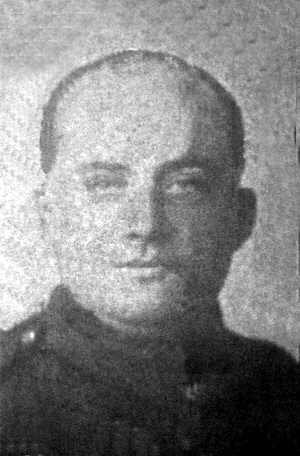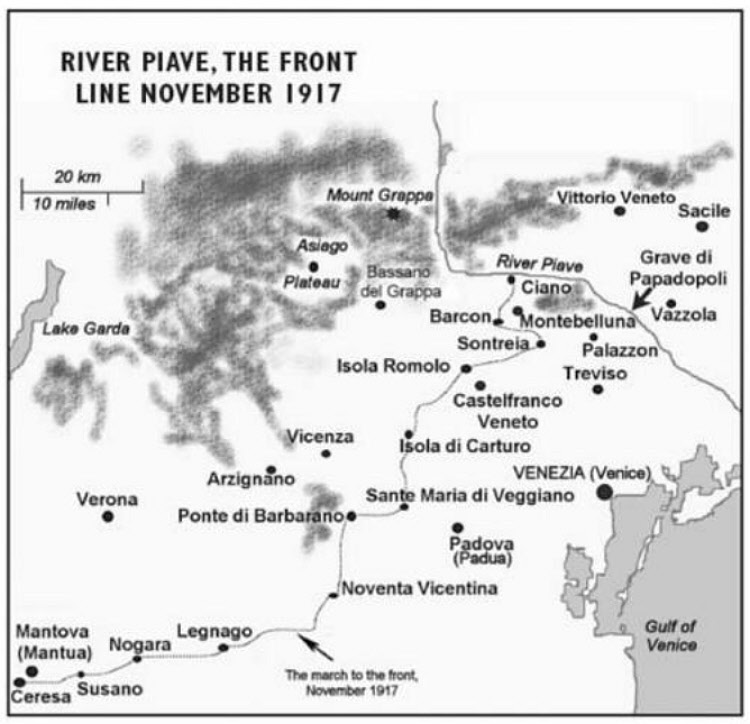
205320, King’s Own Yorkshire Light Infantry, 8th Battalion
Harvey Wainwright was born in 1882 in Ossett, the the son of Eli Wainwright and his wife Sarah Ann (nee Hey) who had married in Ossett in 1878. In 1901, the Wainwright family were living in Town End, Ossett and Eli Wainwright was then 44 years of age. There were four brothers in the family: Harvey, Alfred, Freddie and Norman Wainwright and three of them served in WW1 with Harvey and Norman losing their lives.
Harvey was actually one of eight children, but three had died before 1911. In the 1911 census, Norman’s father has unusually revealed that he is suffering from “pleurisy of the kidneys” and he died later that year in the June quarter of 1911. Harvey Wainwright married Lydia Radley at the Queen Street Chapel on the 2nd of June 1906. Harvey was a rag grinder living at 12, Intake Lane, Ossett and his father, Eli Wainwright was then working as a miner. Lydia Radley was 26 years of age and rag sorter living at Runtlings Lane, Ossett. In 1911 the couple were living at 15, Westfield Street, Headlands, Ossett when Harvey was employed as a mungo packer and there were no children.
8th (Service) Battalion of KOYLI was formed at Pontefract in September 1914 as part of K3 and came under command of 70th Brigade in 23rd Division. They moved to Frensham and then to Aldershot in December 1914 before moving on to Hythe in February 1915 and then to Bordon in May. In August 1915, the battalion landed at Boulogne and in November 1917 moved with the Division to Italy, concentrating between Mantua and Marcaria before taking over the front line at the Montello on the 4th of December 1917.
In early December 1917, the 8th Battalion KOYLI took over the support of the front-line that followed the southern bank of the River Piave, relieving the Italian army that, on the 12th of November 1917, had successfully halted the rapid advance of the Austro-Hungarians in fighting, which as part of the Battle of the Caporetto, is often known as the First Battle of the Piave. It is possible that the Austro-Hungarian army had set the River Piave as an objective, and had decided to halt the offensive there before their lines of communication became dangerously stretched. The arrival of British and French reinforcements, all tried and tested on the Western Front, effectively locked the enemy forces in these positions.
By early December 1917, the Italian theatre of war was quite static on the Piave, but it was not without dangers. This account from the war diary of Harry Lamin1 on the Italian front at the time Harvey Wainwright was also there describes the situation:
“4th, 5th and 6th December 1917: Battalion in support in Ciano. Whilst in support, Companies worked on defences and worked on sanitary conditions, etc. and made hurdles (rectangular sections of fencing made by interweaving flexible branches on a wooden frame; used to shore up trenches or possibly as screens against sniper fire.
11th Battalion should have been relieved by the 8th York & Lancasters, but owing to continuous shelling of our front during the day and a change in the weather, the Brigadier Commander cancelled relief. Warning order received in the early hours to the effect that the Austrians were massing, the battalion stood to. Casualties: 6 other ranks wounded. 12th Battalion relieved the 8th K.O.Y.L.I. and become the left front line battalion of the Left Brigade. Relief complete at 7:30 p.m.”
Harvey Wainwright died after being wounded by a shell on the 8th December 1917 at the age of 36.
The “Ossett Observer” 2 had this obituary for Harvey Wainwright:
“A well-known Ossett man, Private Harvey Wainwright (36), whose home was at 15, Westfield-street, Headlands, Ossett, was killed on December 8th, somewhere on the Italian front, within a little over a month from leaving the country. The news was contained in a letter received from an officer, who said that Private Wainwright’s death was caused by a shell. Before joining the forces in May last, deceased had worked for many years at Messrs. Eli Townend’s mill at Healey. He was actively associated with the Primitive Methodist Church, Queen-street, being a member of the choir and a Sunday school teacher, and at one time, secretary of the Christian Endeavour Society, Interested in ambulance work, he had also been a member of the Ossett Ambulance Brigade.”

Private Wainwright is buried Plot 2, Row B, Grave 6 at the Giavera British Cemetery, Arcade 3, Italy. Giavera is 12 kilometres east of Montebelluna and 20 kilometres west of Conegliano on the S248, the road that joins the two towns.
The Italians entered the war on the Allied side, declaring war on Austria, in May 1915. Commonwealth forces were at the Italian front between November 1917 and November 1918. On 4 December 1917, the XIth and XIVth British Corps relieved the Italians on the Montello sector of the Piave front, with the French on their left. The Montello sector acted as a hinge to the whole Italian line, joining that portion facing north from Mount Tomba to Lake Garda with the defensive line of the River Piave covering Venice, which was held by the Third Italian Army.
Men who died in defending the Piave from December 1917, to March 1918, and those who fell on the west of the river during the Passage of the Piave, are buried in this cemetery. Giavera British Cemetery contains 417 Commonwealth burials of the First World War.
1. “Letters from the Trenches: A Soldier of the Great War”, by Bill Lamin (2009), Michael O’Mara Books, ISBN 978-1-84317-373-1
2. “Ossett Observer”, 29th December 1917